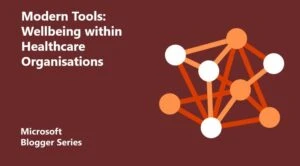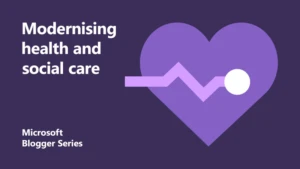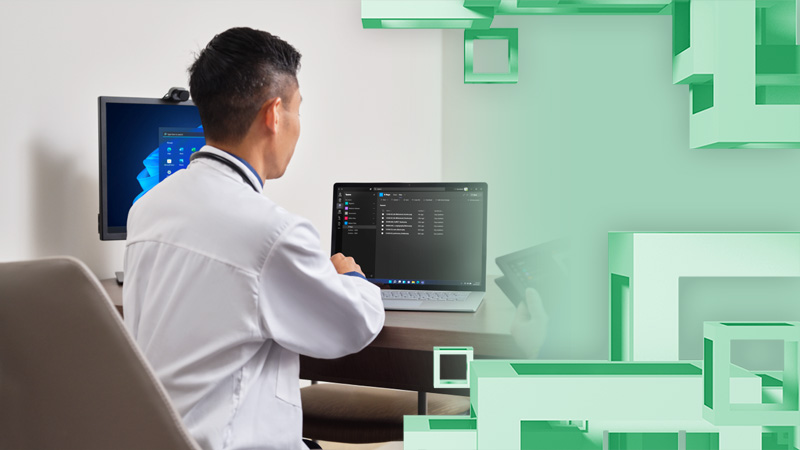
How no/low code apps power patient engagement and operational efficiency
If a person has a stroke, the ambulance crew that sees them will typically have just a few minutes to take their history, examine them and take their vital signs before deciding what to do next. Timely and accurate patient data is not just useful in these cases – it’s a key decisive factor. The shorter it takes for the ambulance team to assess their patient and decide whether and where to convey them, the better the potential outcomes.
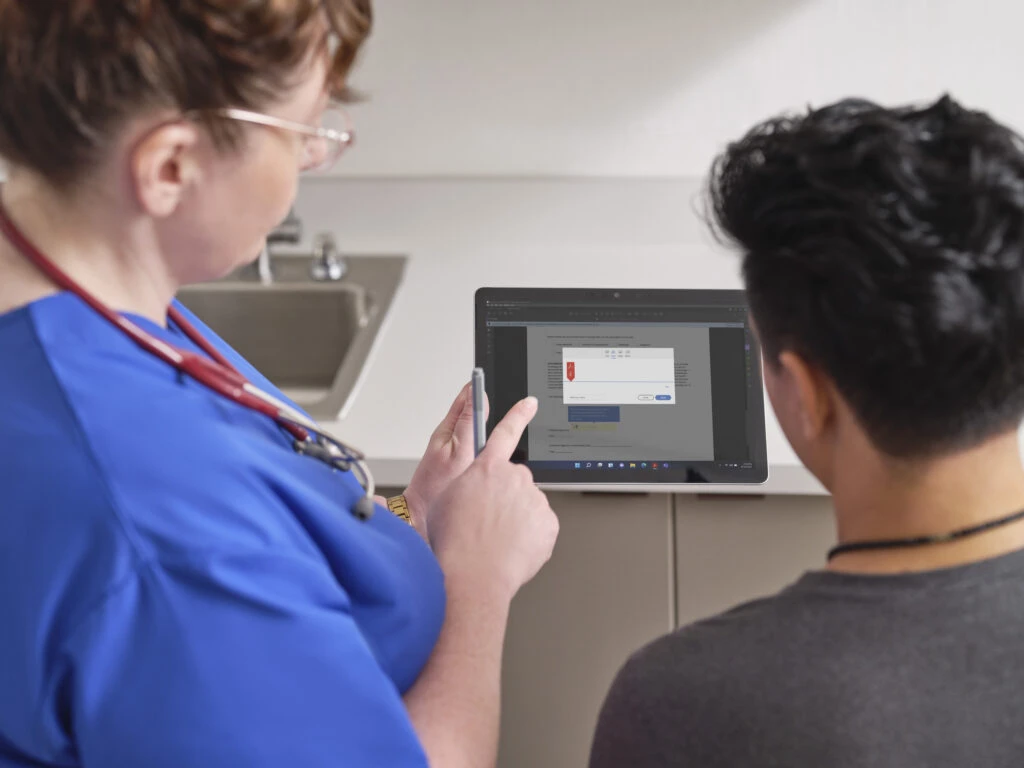
For a long time, the exchange of this highly critical medical information has happened via paper-based forms. An ambulance crew would fill out a form and then pass it to the A&E team when they arrived at the hospital. This increasingly outdated system is prone to delays – the information cannot be transmitted in advance – thereby putting the patient’s health at further risk.
Today, these and many other processes can be digitalised and automated simply and effectively with no/low-code apps. Quick, easy to use and develop, these business apps are becoming the answer to healthcare’s constantly evolving requirements.
Together with our partner Akari Solutions, we recently developed an app for an NHS service specialised in treating strokes and managing stroke referrals. Using Microsoft Power Apps, Akari helped them build a solution that allows medical professionals to fill out digital forms with patient data. Then, they share it directly with the specialist centre. As a result, they can follow the patient wherever they are in their treatment journey.
This is only one of many examples of organisations turning to no/low-code applications and automation to manage current and future challenges. It’s also something that we have been actively engaged in over the past few years – helping the NHS improve operational efficiency and patient experience with simple yet cutting-edge technology. Here’s how we’re doing it.
The importance of delivering patient-focussed services

The past two years have been incredibly challenging for the UK healthcare sector, but they’ve also catalysed much needed digital transformation. Faced with new issues such as lockdowns and long-standing ones such as reduced capacity, an ageing population and increasing clinician burnout, the NHS has been forced to rethink many of the ways it operates.
To ensure that healthcare staff spend as much time as possible with their patients, we’ve seen the health service realise the importance of modernising processes, putting greater emphasis on efficiency and resource optimisation, as well as automating manual tasks.
Technology and patient engagement are – now more than ever – intrinsically tied. NHS organisations are increasingly turning to digital solutions to ensure continuity of care and a seamless experience for all.
This digital transformation entails both giving patients greater access to data, but also helping care teams make better use of their time. The importance of thorough record-keeping and the complexity of modern medicine puts pressure on the time that doctors can spend with their patients. In some parts of the NHS, this issue is exacerbated by outdated hardware and by non-interoperable systems. Sometimes, doctors have to log into 20 or more different systems per day. That leaves the workforce under even more pressure and paves the way for further inefficiencies.
Luckily, this is where no/low-code applications and automation technology can help.
Turning the tide with no/low code applications and automation platforms

With business applications like Microsoft’s Power Apps, NHS organisations can create highly cost-effective, quick and simple solutions that can cater to their many needs.
Using these applications, NHS staff can create bespoke solutions using low amounts of coding (or even no coding at all). They’re easy to build, manage and scale. In addition, the drag-and-drop functionalities and pre-built templates simplify the process. As a result, senior-level developers are no longer required to build high-quality, secure apps and automations.
That is game-changing. Not only does it enable faster time-to-deployment compared to traditional software developments. But it also allows people with different experiences to give their input when building the apps. This ultimately creates highly customised solutions that meet their specific needs.
Just imagine how transformational that can be for a healthcare service like the NHS, composed of hundreds of hospitals across the country. Indeed, many of the solutions and processes we’ve already created via Power Platform can be applied to all NHS Trusts.
From time-critical situations to day-to-day patient referral
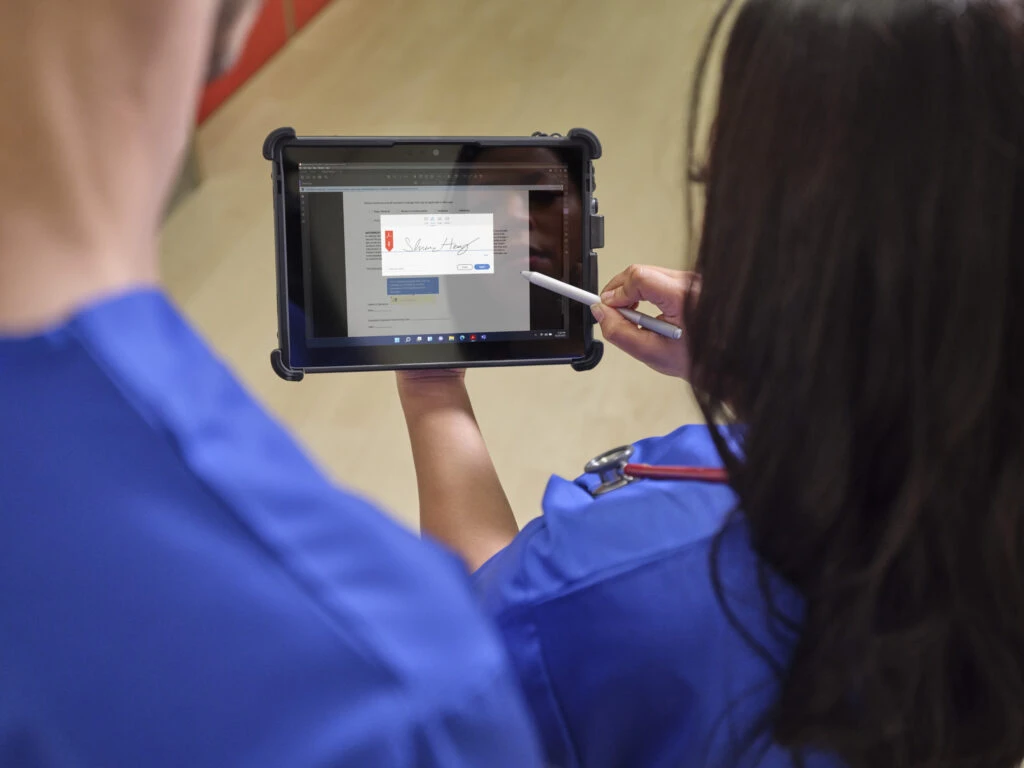
Power Apps has a transformational potential in many areas of healthcare, particularly when it comes to resource management. For example, our partner ANS recently developed a Power App that helps NHS Trusts equip their frontline staff with the correct personal protective equipment (PPE) kits.
During the pandemic, this provisioning used to happen via a multitude of apps and websites. However, as soon as demand increased dramatically, inefficiencies in the system meant that some hospitals had too much PPE and others not enough. With their new Power App, Trusts can now keep track of PPE availability and order new supplies more effectively.
Another great example is the work we’ve carried out with the London Air Ambulance Charity. This is an advanced trauma team that looks after patients needing emergency medical treatment in the capital, and who are unlikely to survive the journey to hospital by road.
Here again, the team has started using Power Apps to build a range of checklist apps that replace their existing paper-based processes. They’re now also attaching QR codes to their medical bags, which can then be scanned to keep track of equipment.
Beyond emergency response, we’re seeing more and more organisations turn to business apps to automate all kinds of manual process. Our client, an NHS Foundation Trust, is a prime example.
As a mental health organisation, they sometimes refer their patients to other specialists. Previously, these referrals would happen through email or fax. Now, the organisation has created a primary to secondary care referral system – via Power Apps. This system allows them to share patient information in a seamless and secure way. All while reducing the opportunity for mistakes and delays to occur.
Building no/low code apps with Power Platform
After an incredibly challenging period, it’s time for healthcare to look ahead. The past two years have demonstrated the importance of having agile, fast and digital solutions that simplify operations for clinicians, giving them time back to spend with their patients.
So how can you get started with Microsoft Power Platform?
First off, make sure you know what you’re embarking on. We have a lot of resources – from self-paced learning courses to in-person digital events – designed to help you understand the benefits of no/low-code applications and automation platforms.
Once you’ve done all your research, ask yourself: What are some of the day-to-day processes or challenges that could be significantly improved through automation? Which of those are the most impactful and time-sensitive?
These two questions alone will likely already generate ideas for the first few apps and automations that you could create. For whatever comes next, we’re here to help.
Find out more
Discover Power Platform Training Days
Get Power Platform learning resources
About the author
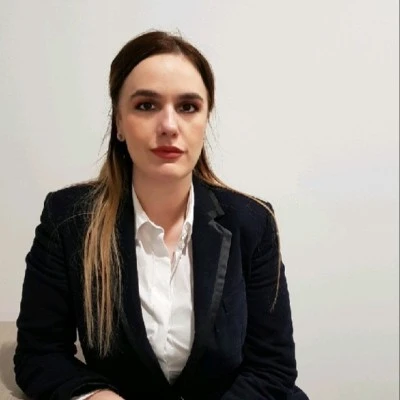
Ana is Enterprise Sales Manager for Business Applications in the UK Public Sector. With more than 15 years’ experience in technology, she is a technologist, and evangelist with a specialism Healthcare and Education and is passionate about using technology for good.

